Critical Path Examples: How to Find Vital Tasks That Impact Your Project
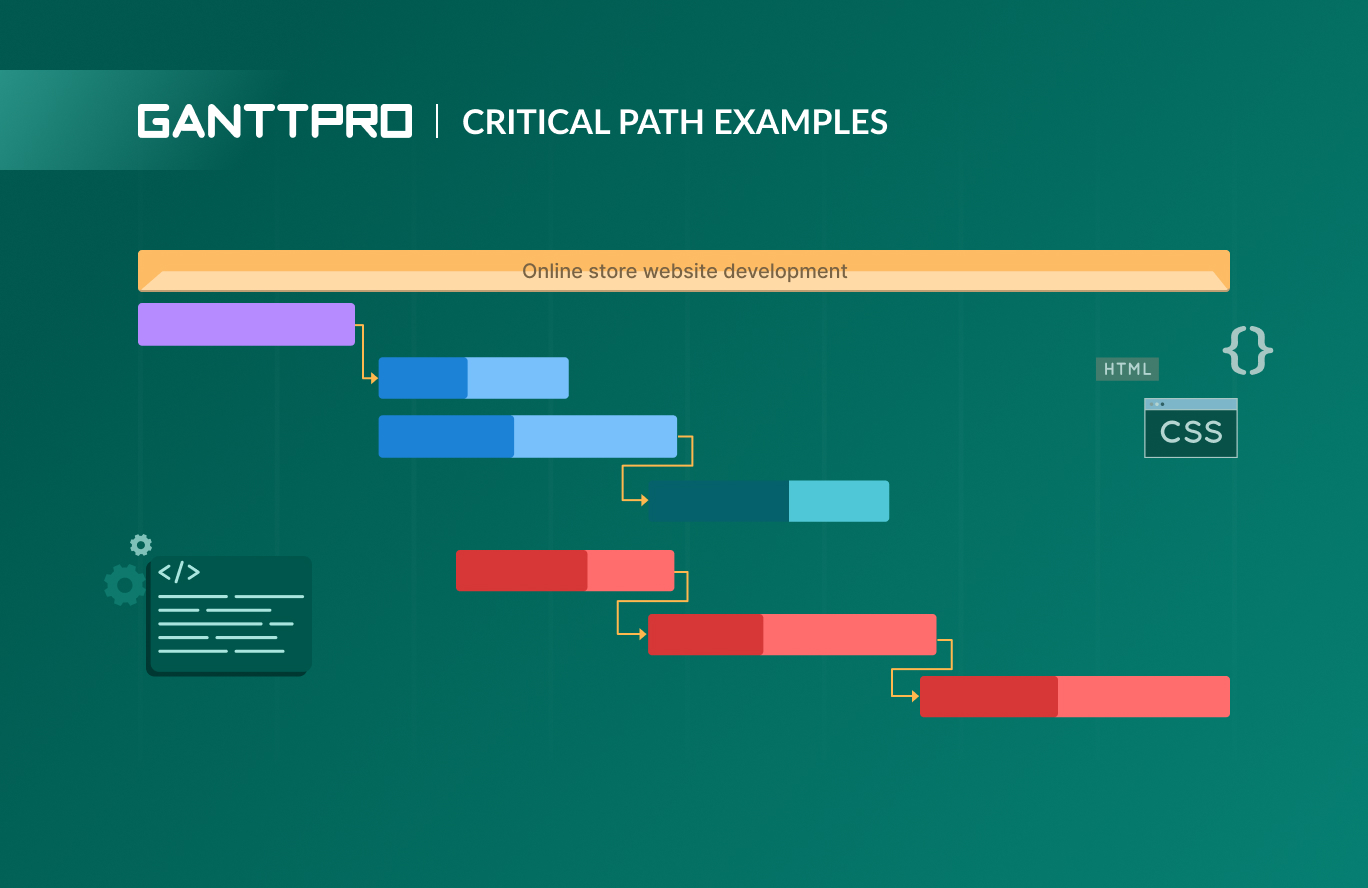
Audio version:
A critical path helps ensure efficient work planning, control, and execution. It represents a sequence of vital tasks that must be accomplished for the successful project completion.
Managers and teams often need a simple critical path example to understand the essence of this concept and learn how to effectively work with it and put it into practice.
If you think that finding a critical path in your project is a daunting challenge, then you’re in the right place. Here you’ll learn how to seamlessly define and visualize a critical path with a reliable PM tool that uses special algorithms to find it for you.
For your convenience, we’ll describe two cases with different critical path examples in various projects:
Before moving on to these examples, it is important to note that the definition and management of a critical path are impossible without convenient visualization.
Luckily, this visualization can be easily achieved with the help of proven project management tools such as a Gantt chart.
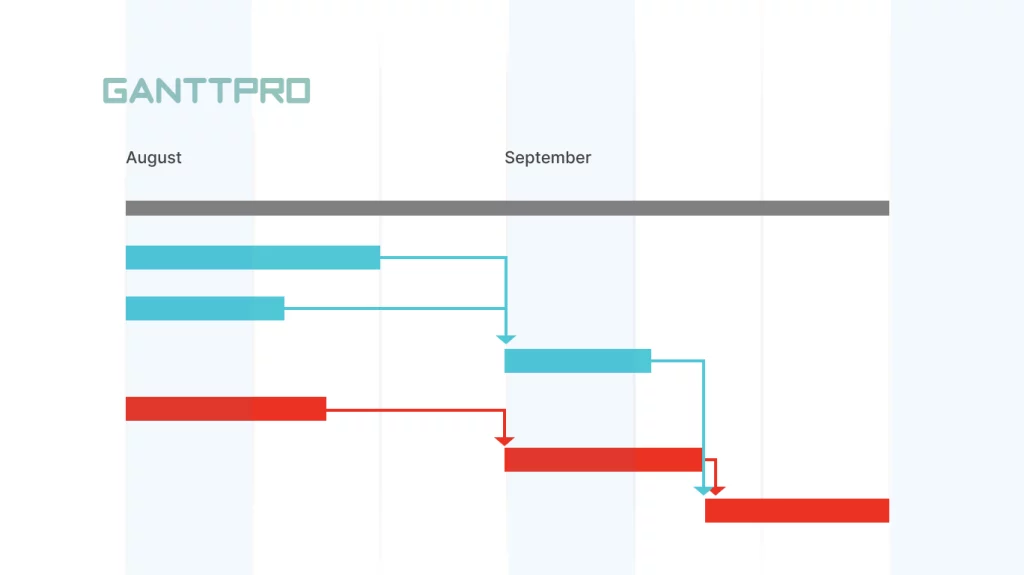
A Gantt chart critical path is not just a powerful assistant in planning project schedules but also one of the constituent elements of the successful outcome of your project as a whole.
Here are the thoughts of Iqbal Jumabhoy, CEO of BlackBook Technologies (the app for tourists) who assesses the role of the critical path in the projects of his company:
We heavily rely on the critical path. In our weekly meetings, we look through the critical path and we know exactly what is behind and who is behind it. This is very important when you are launching a new product.
Let’s not waste any more time and move on to the critical path examples.
Critical path in project management example
The critical path method in project management is a reliable assistant of many PM professionals as it warns against potential project delays and aids in resource and budget planning. Staying on a critical path is considered crucial to ensure your project is completed on time and within budget.
The good news is that you don’t need to draw a critical path on paper because you can apply a helpful online platform. Although according to the statistics (2023), only 25% of organizations use PM software, their future growth potential looks significant.
One of the best solutions to visualize critical paths is GanttPRO.
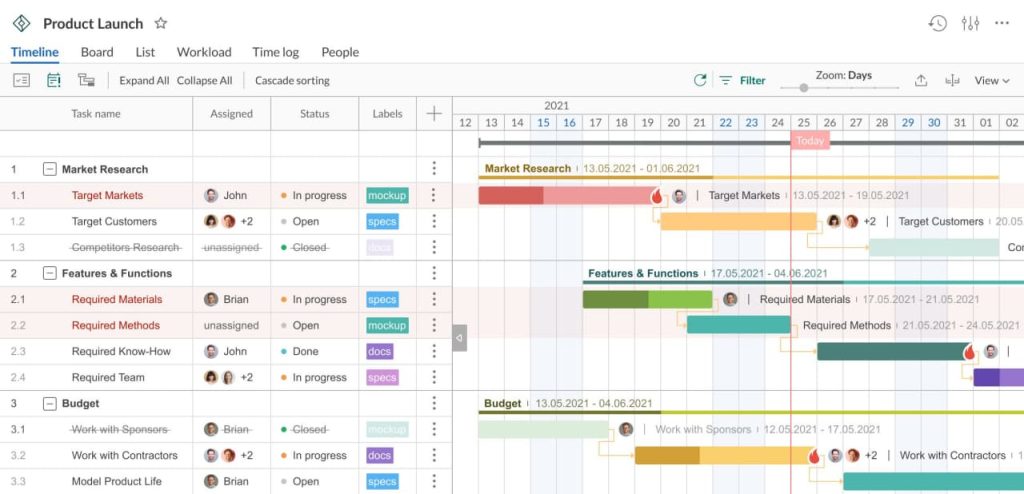
This robust Gantt chart builder provides a visually appealing way to identify what tasks directly affect the project completion date.
The process of finding a critical path here is a quick and easy action. You’ll need only one click to switch on a critical path in GanttPRO project settings.
Project teams use GanttPRO to identify the most essential tasks that impact project timelines, recognizing it as reliable critical path software.
Now it’s time to analyze the critical path in a project example #1. We’ll explore the project of creating and developing a website for an e-commerce store.
Below are the consequent steps that will lead you to the given goal.
1. Define your project goals and collect ideas
The first thing you should do while planning your project is to define its goals and objectives. It’s recommended to outline what you want to achieve with your online store.
Identify your target audience, sales targets, and key performance indicators (KPIs). Then try to gather all your ideas together and list them in clear order.
Among other things, at this stage, you should conduct detailed market research, discuss the optimal business model with your team, and choose a domain and hosting for your future online store.
2. Create a project and fill a timeline with tasks
Start your project in GanttPRO with just a few clicks.
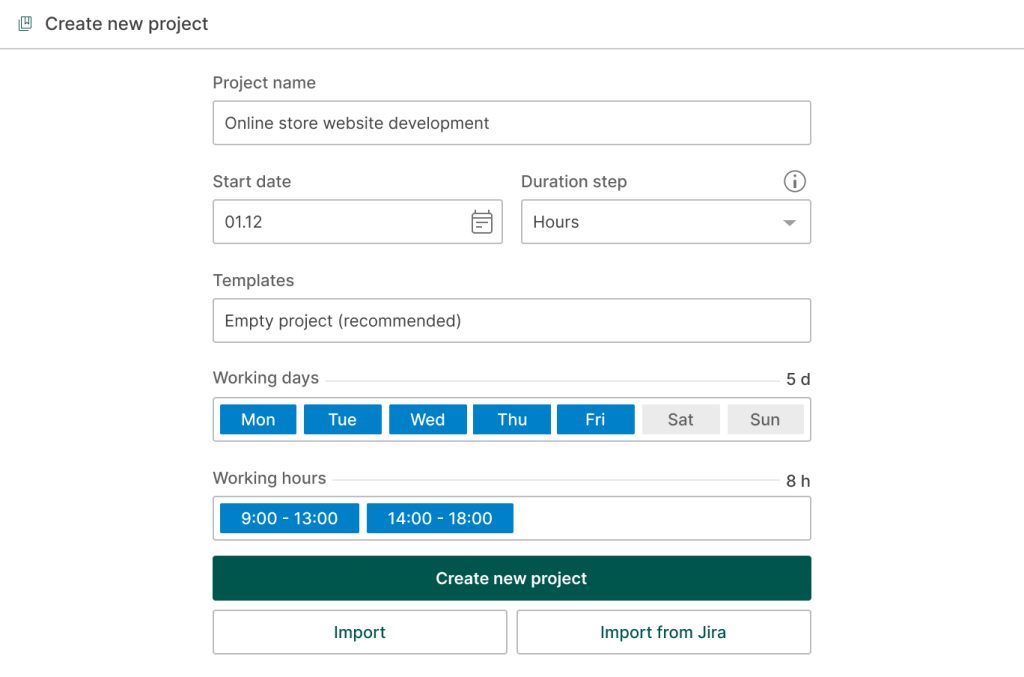
Then turn your list of ideas into tasks and enter them on a timeline. Consider start and end dates, as well as the duration of each task. Identify predecessors if needed.
The process of developing your online store website may contain complex and long-term tasks. GanttPRO proposes to use a WBS work breakdown structure to break these tasks into smaller chunks and visualize them in a proper hierarchy. You can also assign tasks to responsible people from your team.
It’s worth adding that it’s useful to estimate the time required to complete all your project tasks and activities. You can use days, weeks, months, or even years to measure. Such estimation will depend on the scale and complexity of your project.
What tasks and subtasks do our simple critical path example contain?
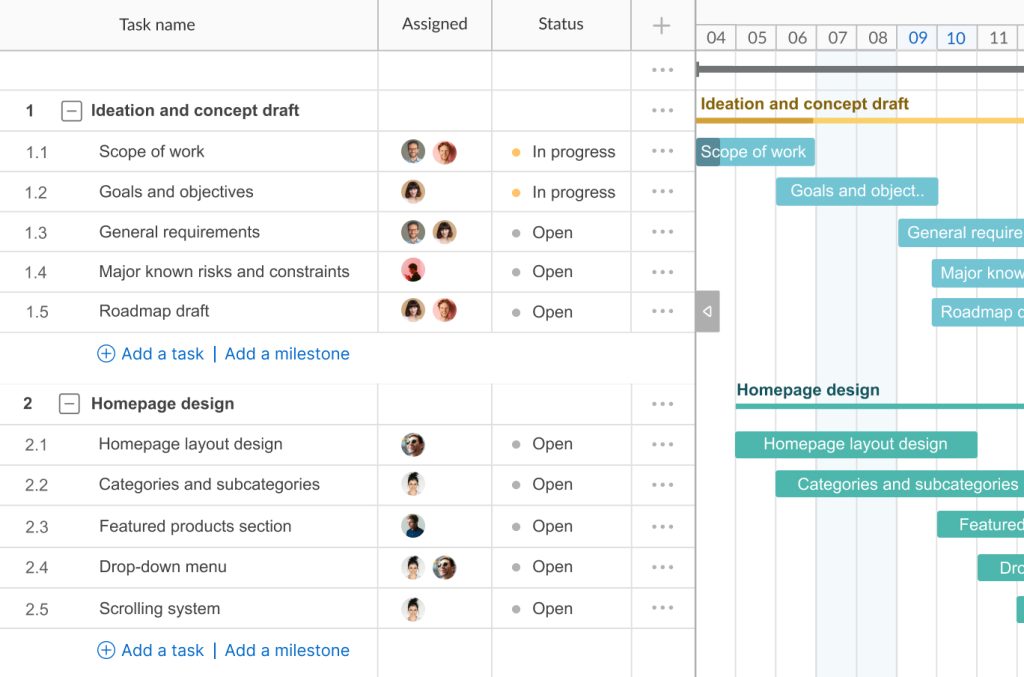
Following the principles of the classic project management lifecycle, our project begins with the idea collection and planning stage. During this period, project managers and their teams work with many subtasks, including the following:
- Scope of work.
- Goals and objectives.
- General requirements.
- Major known risks and constraints.
- Roadmap draft.
The next task is related to the design of the homepage of our online store website. It will be the first page that future customers will visit.
Here developers and designers join the workflow. They will work on the following pool of tasks:
- Homepage layout design.
- Categories and subcategories.
- Featured products section.
- Drop-down menu.
- Scrolling system.
Buttons also play a huge role in the operation of any online store. They motivate website visitors to take one action or another. Therefore, the task dedicated to developing the buttons’ design and functionality necessarily appears in our example of a critical path.
Such a task may contain subtasks related to the development of the following buttons:
- Add to cart button.
- Keep shopping button.
- Free delivery button.
- Apply a coupon button.
Going down the hierarchy of tasks, the timeline of our critical path example may contain activities related to development processes, testing, and the final launch of the website. All of these tasks may include many subtasks and events, depending on the project size.
We will not describe the details of each task to move on to the next essential stage, which will lead us to find the critical path in this project.
3. Set dependencies and milestones
It’s also important to determine which tasks are dependent on other activities before they can begin. You can do it with the drag & drop feature.
Consider the feedback of your team members when defining task dependencies. Failing to identify them correctly makes a critical path useless.
Don’t forget to mark the most important items on your timeline that require special attention. They are called milestones in project management.

4. Adjust the view of your project to reflect a critical path
Now our critical path in project management example has the identified activities and dependencies, so it’s possible to find this path there.
In GanttPRO, you need only a few seconds to switch on a critical path in the project settings. Just click the corresponding icon in the top left corner, where these settings are located.
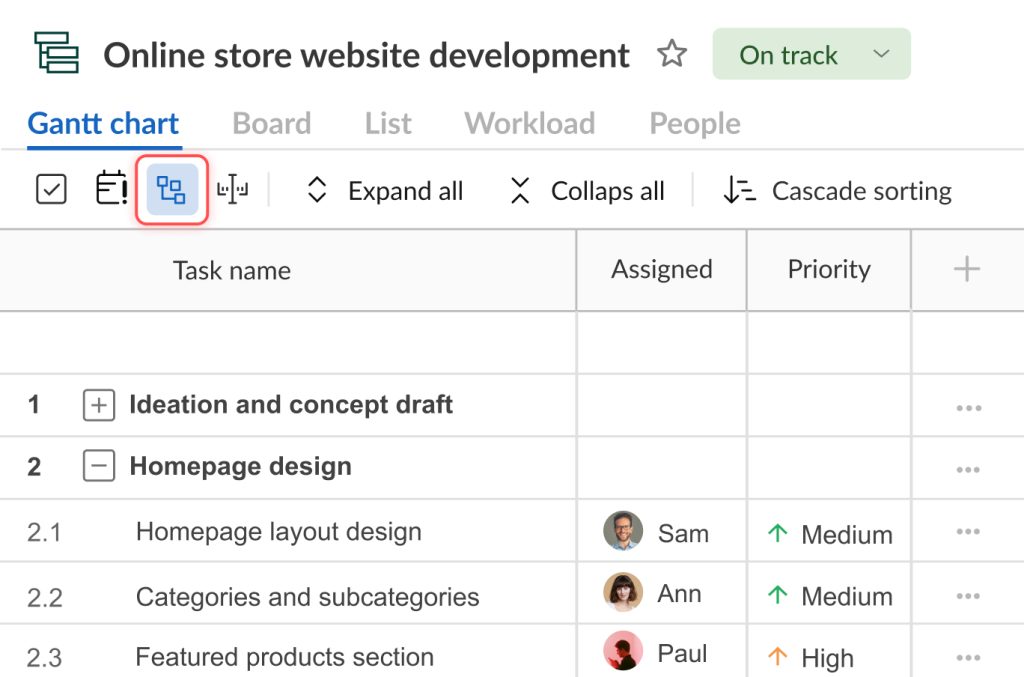
You’ll immediately see how the Gantt chart maker determines the path. The chain of important online store website development tasks will be shown in red.
It allows for depicting the order of all activities in our project management critical path example without extra effort.
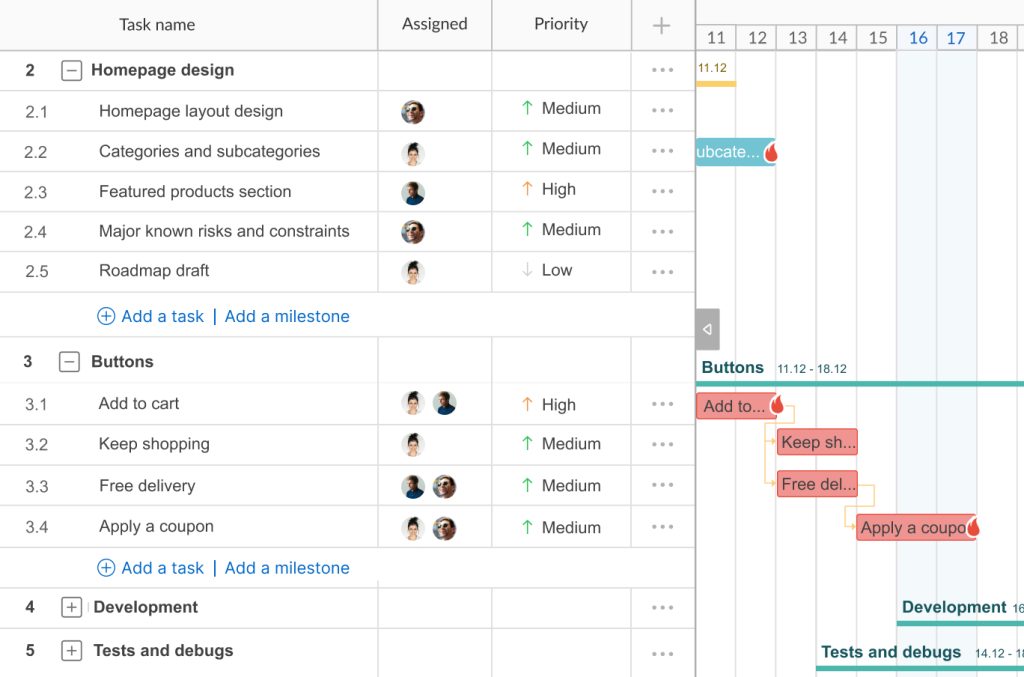
This example of critical path in project management demonstrates how GanttPRO helps in identifying the most important tasks and their sequences.
Please note that you’ll have a higher probability of schedule changes if you have several critical paths.
After all, the whole example on a Gantt chart for an online store website development project will appear as follows below.
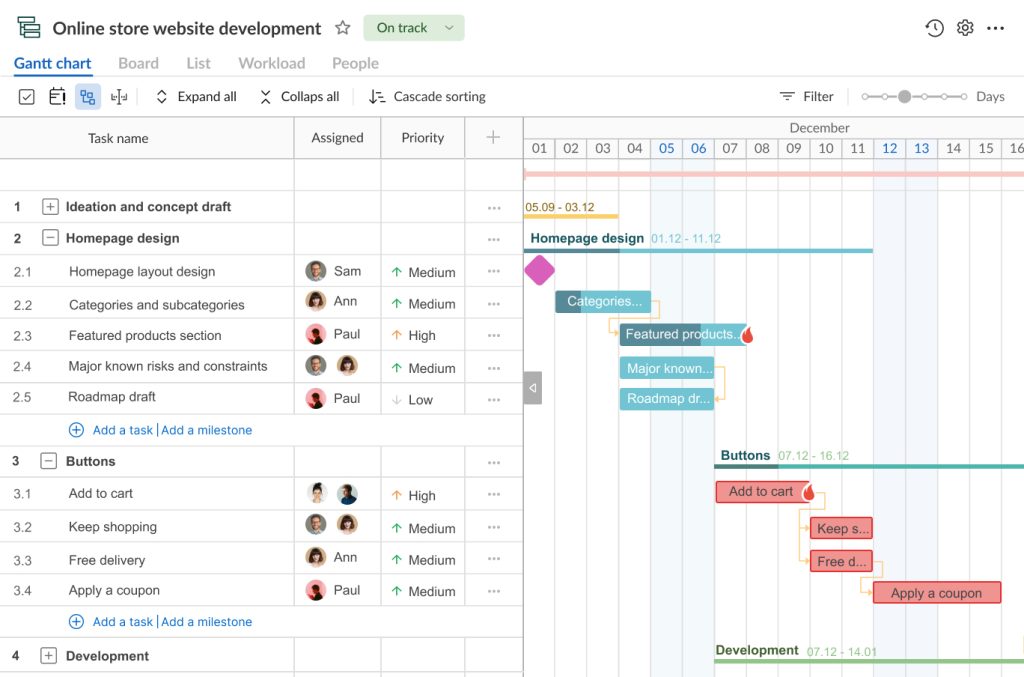
That was quite a common critical path project management example full of tasks and activities related to planning and developing an online store website.
Now let’s turn to the example from another highly demanded industry.
Critical path construction example
Construction work often requires more approvals and additional management activities. It may involve a wide range of subsidiary tasks.
Finding critical tasks on a construction project timeline is also not a difficult action in case you have a professional critical path planner at hand, such as GanttPRO.

Professional project management software
Visualize a critical path on a handy Gantt chart.
Sign up for freeBelow we consider the example of using the critical path method in construction. This example reflects the steps similar to the steps in the previous project. However, these phases will include tasks and activities related to the construction industry.
Let’s consider a project of building a college campus.

1. Start with ideation and establishing goals
Like any project, a construction project also begins with research, setting goals and objectives, discussions, initiating activities, and sketching out future activities.
Your foremost task here is to precisely define the goals of your project and combine all essential ideas together.
Conduct comprehensive market research and invite construction professionals. Predict and consider possible approvals, inspections, and audits because there can be many of them in the construction industry.
2. Turn ideas into tasks and visualize them
Collect all ideas and break your construction project into manageable tasks. You can use the WBS feature to divide them into smaller subtasks.
Entering these activities on a GanttPRO timeline will not take much time. At this step, it’s important to consider start and end dates and the duration of tasks. Distribution of tasks among team members and assigning responsible people is also crucial here.
Our critical path construction example includes consequent tasks for planning construction work to build a college campus and develop the surrounding area.
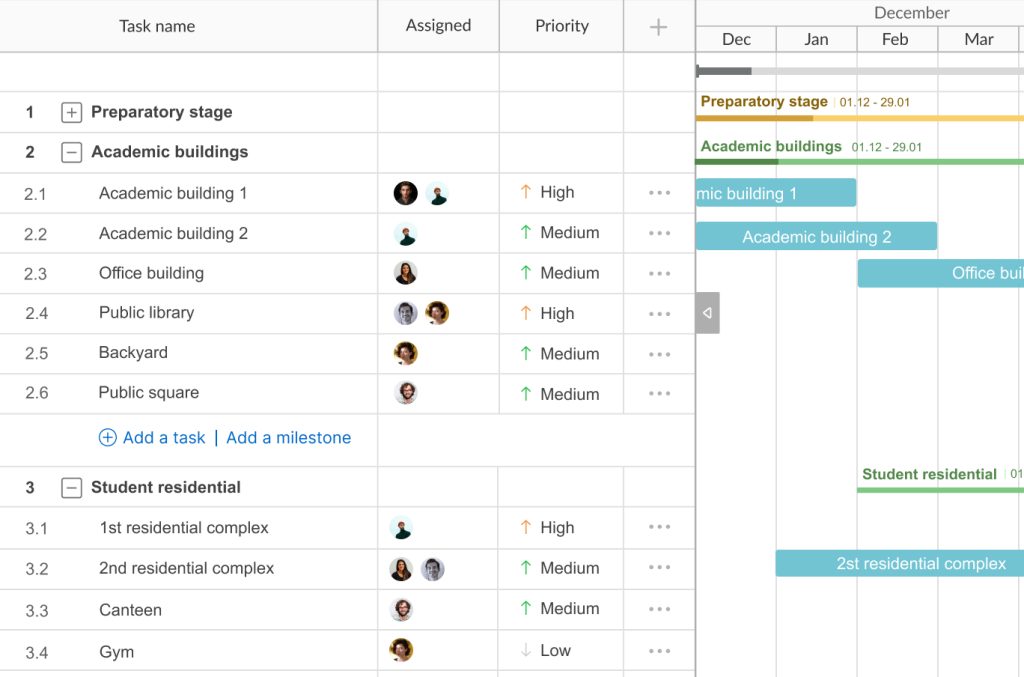
The project begins with the preparatory stage, which includes:
- General approval of the project.
- Selection of contractors and subcontractors.
- Construction crew approval.
- Development plan.
- Terrain and soil analysis.
- Ecology commission.
After approvals and preparatory processes, construction teams can begin work on the key objects. In our example, these objects represent two large and long-term tasks: the construction of academic buildings and the construction of a student residential.
The task associated with the academic buildings consists of the following subtasks:
- Academic building 1.
- Academic building 2.
- Office building.
- Public library.
- Backyard.
- Public square.
The task related to building a student residential includes construction works associated with:
- 1st residential complex.
- 2nd residential complex.
- Сanteen.
- Gym.
- Sports fields.
- Cafe.
- Medical station.
The tasks located below the specified activities relate to landscaping and cleaning work, interior design, furniture supply, etc.
From the details, let’s return to the next stage in planning the construction project and determining a critical path.
3. Connect dependent tasks and add milestones
As in the case of the project related to creating an online store website, you need to link all dependent tasks before the next stage can begin. Additionally, it’s vital to add milestones and deadlines.
You can explore the deadlines, dependencies, and project milestones examples marked in our illustration below.

4. Visualize a critical path
Now you can depict the order of your activities and visualize a critical path with the help of GanttPRO settings.
With only one click, the chain of important tasks in your college campus construction project will be shown in red.

Following these steps, you’ll be able to undertake your work efficiently, with milestones being met without construction project delays and interruptions.
Ultimately, our critical path example on a Gantt chart for a college campus construction project would look like this.

Of course, every project is unique and your case may contain many specific features and individual details.
However, based on the critical path examples above, you will be able to find and visualize this path in your project faster and easier.
By the way, GanttPRO offers ready-made Gantt chart templates that will make it even easier for you. You will need to fill a project timeline with your tasks and a handy Gantt diagram will automatically be made.
Frequently asked questions about critical path examples
-
Yes, a project can have more than one critical path. It may happen when a project schedule contains multiple parallel activities or paths that have the same total duration and can potentially delay the project’s completion if any of them are delayed. You can name these paths “near-critical paths.” They are important to monitor because delays in any of them can impact the overall project timeline. It’s essential to identify and manage both the critical paths and near-critical paths to ensure successful project execution.


Thanks for sharing informative and valuable knowledge!